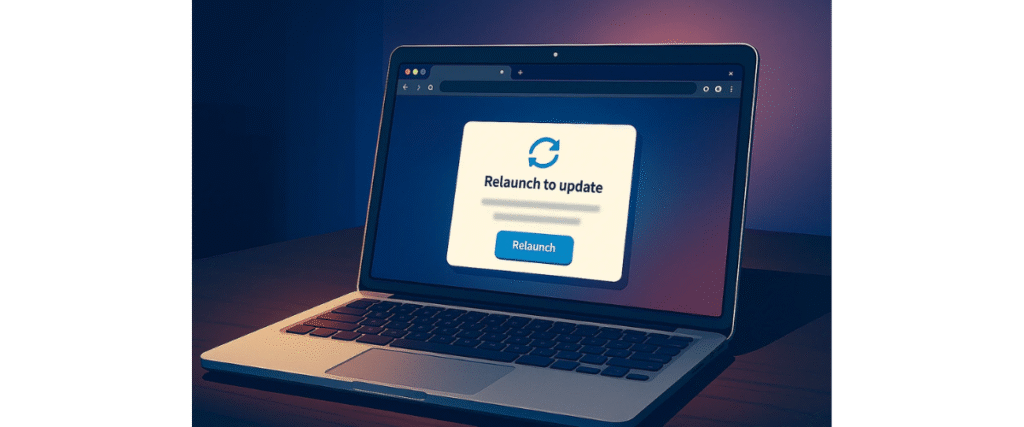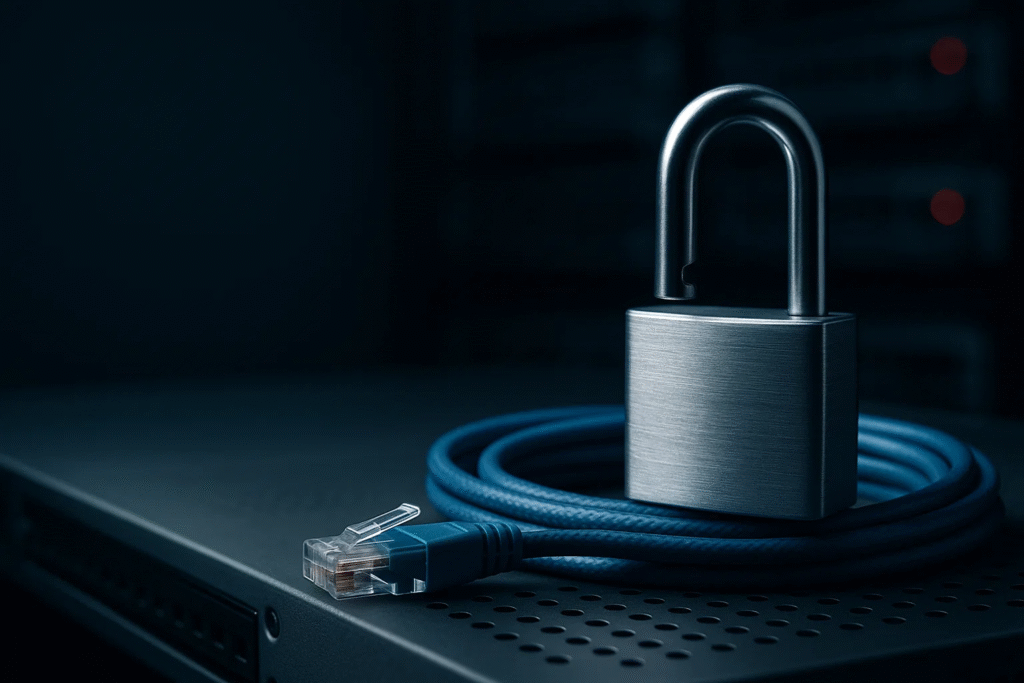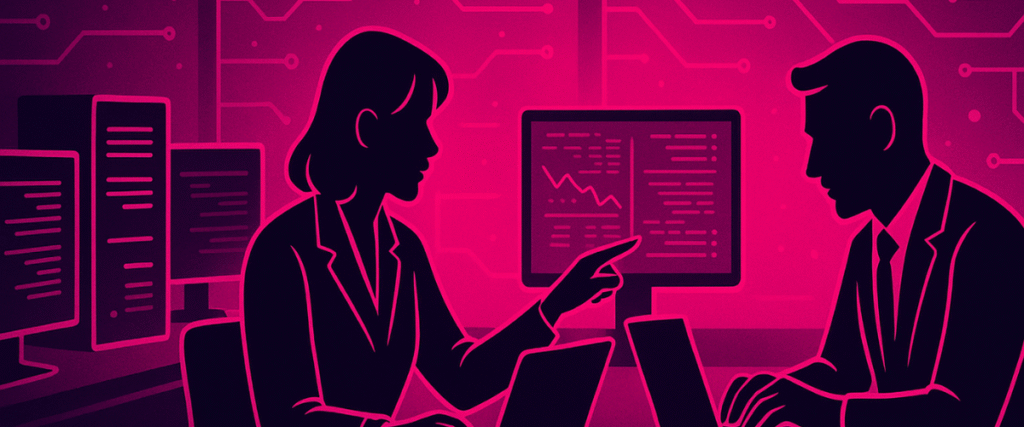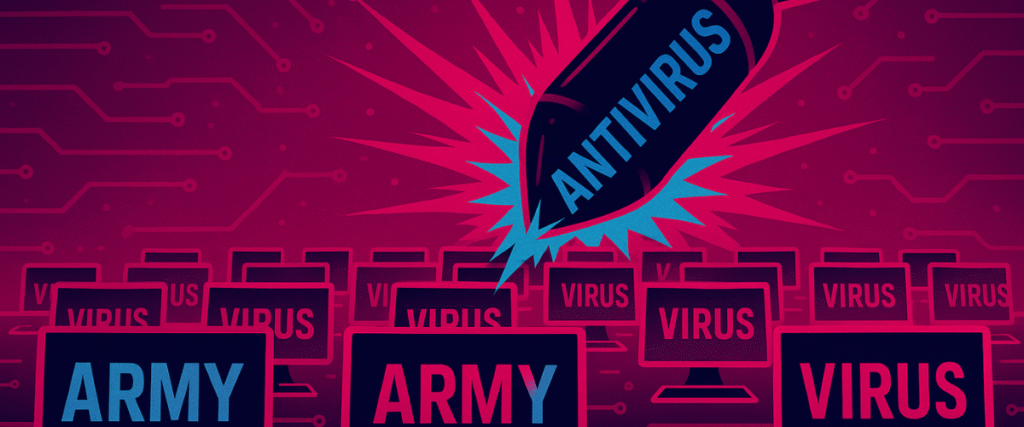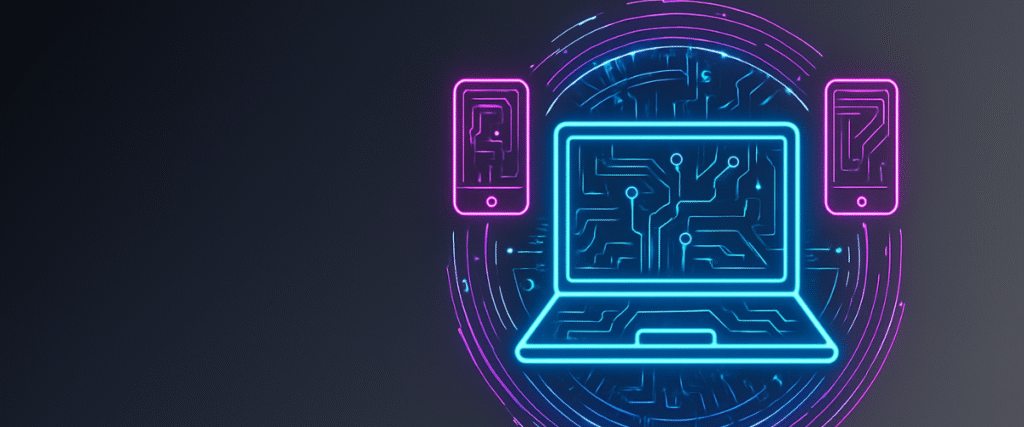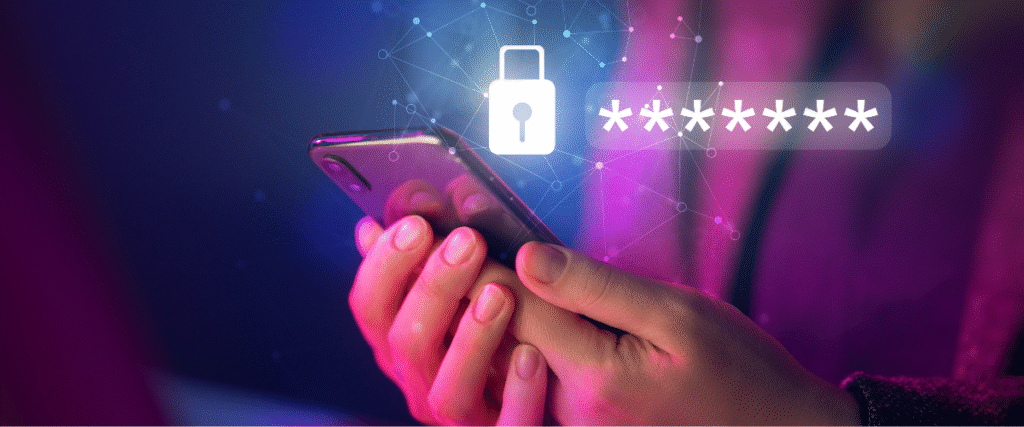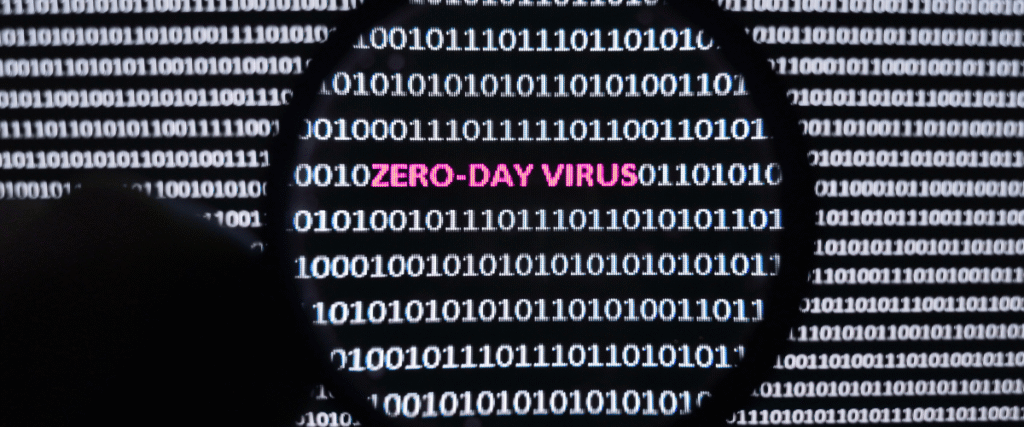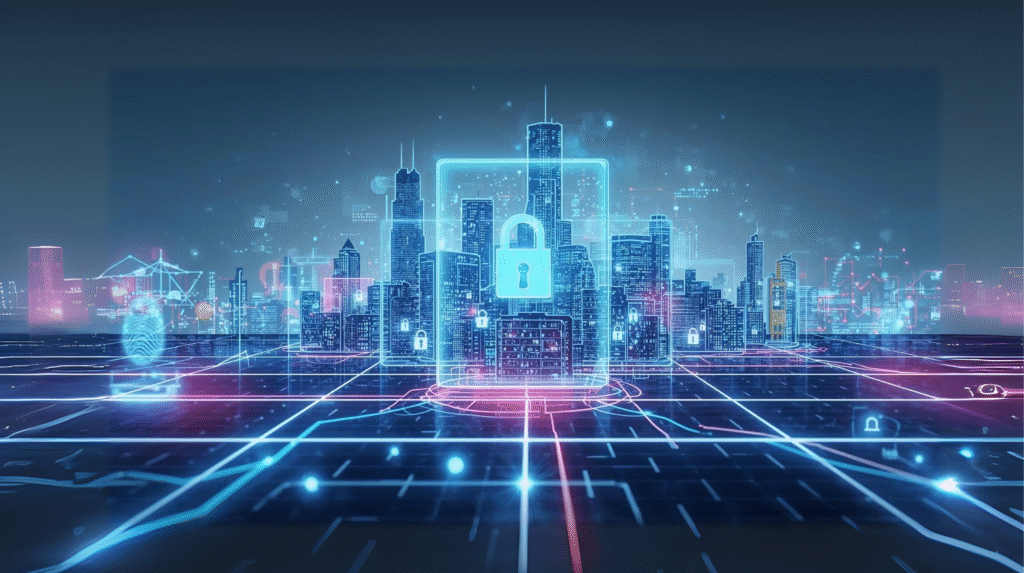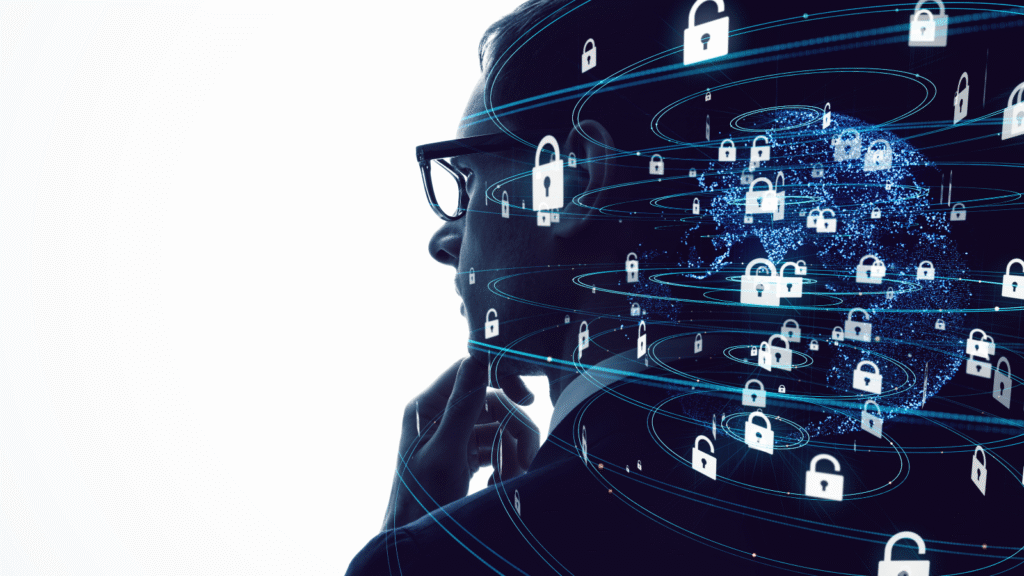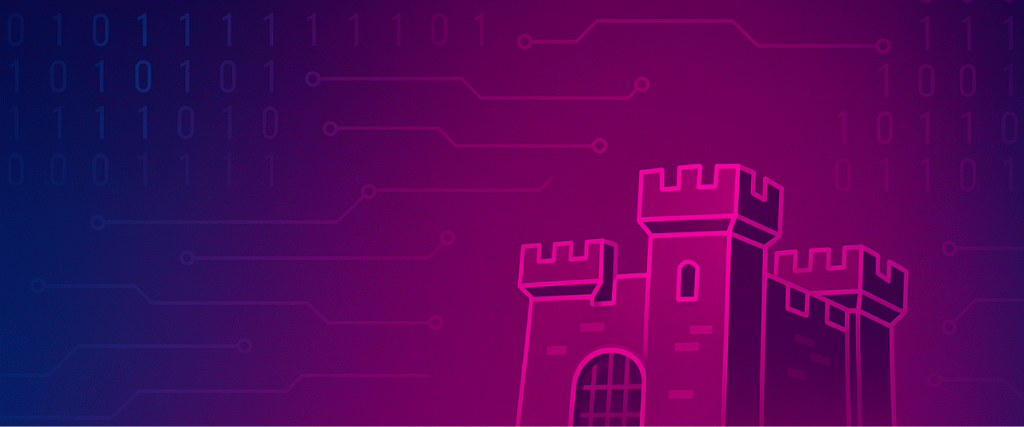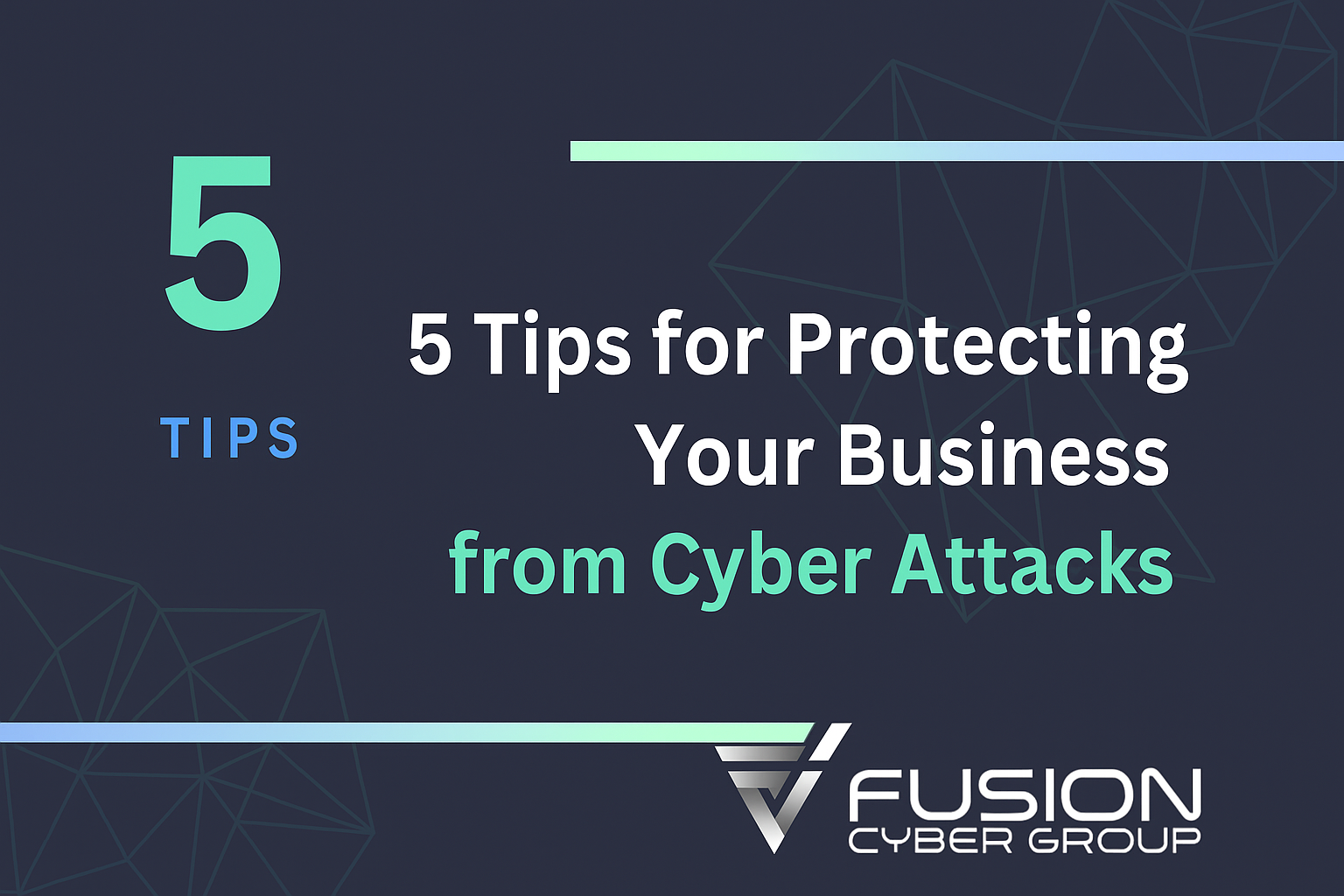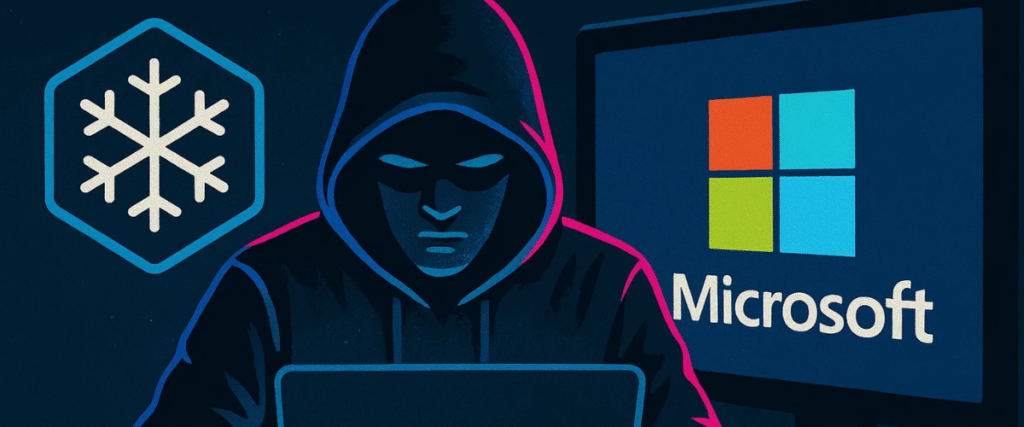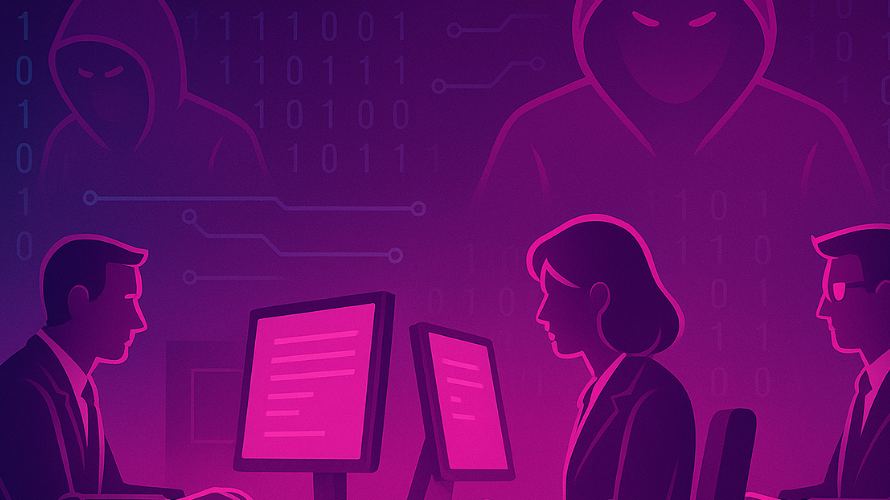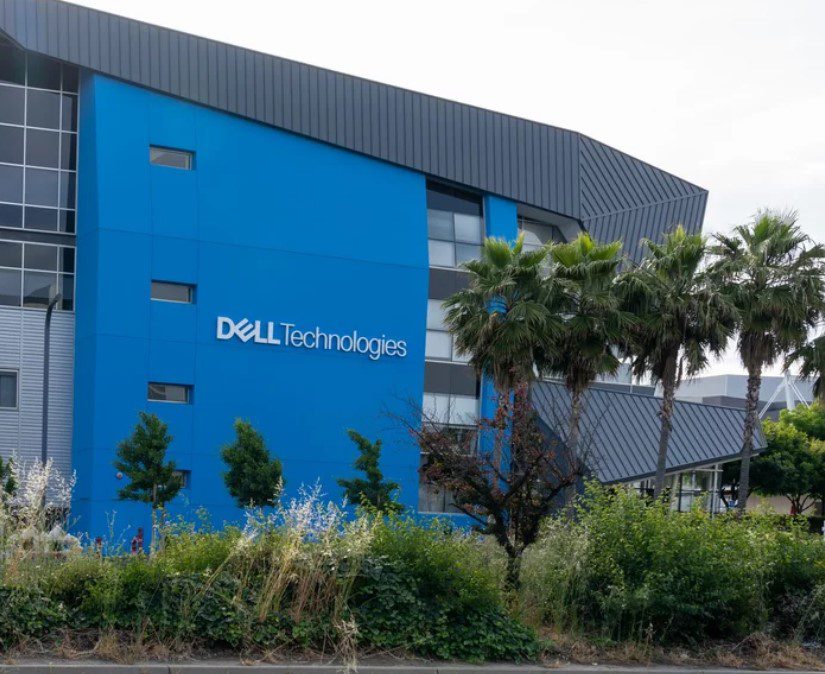Every device is a doorway to your business. Endpoint security ensures it’s a shield, not a vulnerability.
Understanding Endpoints in Cybersecurity
In today’s workplace, connected devices are everywhere — from laptops and desktops to smartphones, tablets, servers, and IoT equipment. Simply put, an endpoint is any system that connects to your network and interacts with the company’s resources. In other words, every device your employees use to log in represents both an opportunity for efficiency and a potential vulnerability.
In the past, organizations were satisfied with installing traditional antivirus software on workstations. Today, that approach is no longer enough. Endpoints are multiplying, becoming more diverse, and increasingly mobile. Data flows through the cloud, employees work remotely, and personal devices are more and more integrated into corporate environments. This transformation creates a complex digital ecosystem where every connection can be exploited by cybercriminals.
For organizations, these access points are the frontline of productivity and defense. Employees rely on them daily to process sensitive information, collaborate with clients, and run critical applications. Unfortunately, they also represent prime targets. According to the Verizon Data Breach Investigations Report, more than 70% of initial breaches exploit a vulnerable or poorly configured device.
Beyond traditional office equipment, endpoints now include smart printers, surveillance cameras, and even voice assistants. Each new device adds another potential entry point for threats, making it essential for businesses to adopt comprehensive protection measures. For example, a networked printer without proper security protocols can easily become a target for cybercriminals, offering unauthorized access to the entire network.
The rise of bring-your-own-device (BYOD) policies adds yet another layer of complexity. Personal phones and computers used for work can unintentionally introduce vulnerabilities. Businesses must implement secure access controls and educate staff on the importance of maintaining security across all devices. A Mobile Device Management (MDM) solution, for instance, can enforce company policies on personal equipment.
Training employees remains just as critical. Quarterly workshops that explain new phishing tactics (CISA phishing awareness guide) or highlight real-world attack examples empower staff to act as the first line of defense. Proactive awareness builds resilience alongside technical controls.
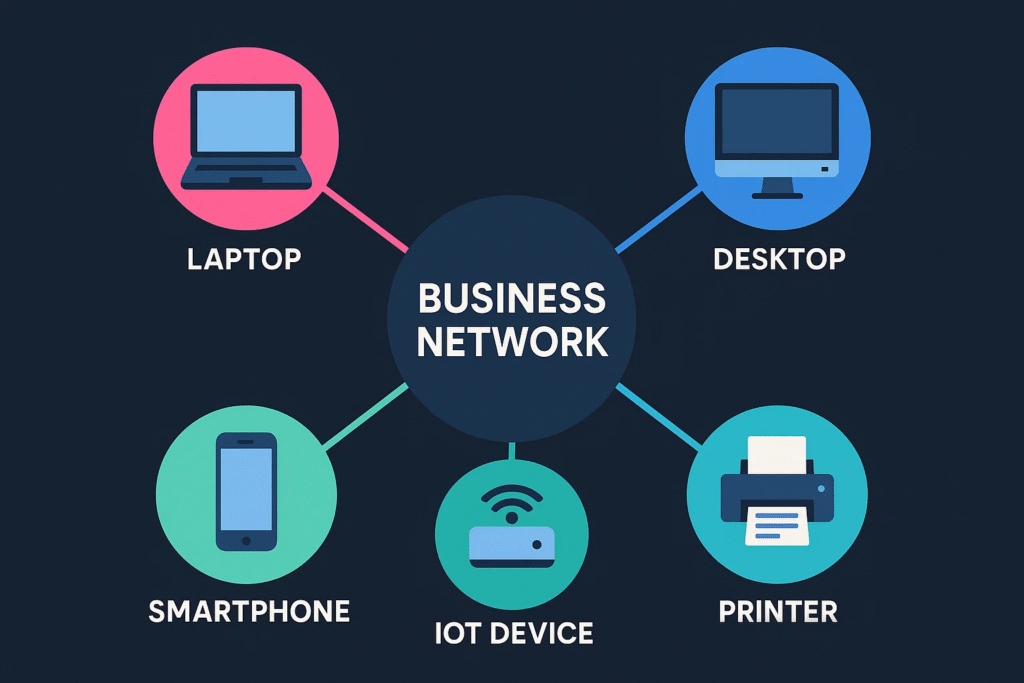
Real-world example
In 2022, a midsized Canadian company experienced a breach that began with the compromise of an employee’s tablet. Lacking proper device-level protections, the attacker gained access to email accounts and confidential project files. After adopting a Unified Endpoint Management (UEM) solution and providing ongoing cybersecurity training, the company significantly reduced its risk exposure.
Why Endpoints Are Critical for Businesses
- They’re Where Work Happens
Devices are where your employees create, share, and store company data. If a machine is compromised, productivity can stall. Consider the impact of a ransomware infection on just one employee laptop — projects grind to a halt, and collaboration slows dramatically. - They’re the Gateway for Cyber Threats
Attackers exploit user devices through phishing, ransomware, or outdated software. Once inside, they can move laterally to reach financial systems or sensitive client records. Verizon’s annual Data Breach Investigations Report consistently shows that compromised devices are one of the most common entry points for larger intrusions. - They Enable Hybrid and Remote Work
With distributed teams, securing laptops and mobile devices ensures safe connections from anywhere without increasing business risk. For many companies, remote work is no longer optional but a core part of operations, which means protections must extend beyond the office walls. - They Drive Compliance and Trust
Industries such as healthcare, finance, and education face strict regulations. Protecting devices helps meet frameworks like HIPAA, GDPR, and PCI-DSS — while strengthening customer confidence. A law firm or healthcare provider that demonstrates compliance readiness not only avoids penalties but also builds trust with its clients and patients.
How MSSPs and MSPs Protect Endpoints
Managed Security Service Providers (MSSPs) and Managed Service Providers (MSPs) play a crucial role in strengthening endpoint protection for businesses of all sizes. Unlike traditional IT support that reacts to problems as they arise, these providers offer a proactive, layered approach to cybersecurity. By combining advanced tools, continuous monitoring, and expert knowledge, MSSPs and MSPs deliver enterprise-grade protection that small and mid-sized organizations would struggle to maintain on their own.
Their endpoint protection strategies extend beyond simple antivirus software. They integrate multiple solutions and processes designed to prevent, detect, and respond to threats in real time. Some of the most important methods include:
Endpoint Detection & Response (EDR)
EDR solutions continuously monitor and record endpoint activity. Instead of relying only on known virus signatures, they use behavioral analysis and machine learning to detect unusual patterns — such as an employee laptop suddenly trying to connect to a suspicious external server. For example, if ransomware begins encrypting files, an EDR platform can automatically isolate the device from the network, stopping the spread. MSSPs add value by tuning these tools for each client, reviewing alerts, and responding to incidents 24/7.
Extended Detection & Response (XDR)
XDR goes one step further by integrating data not just from endpoints but also from networks, email systems, and cloud platforms. This broader visibility allows analysts to connect the dots between multiple suspicious activities. For instance, if a phishing email compromises a user’s credentials and that same account later attempts to log in from an unusual location, XDR can detect the correlation and flag it as a coordinated attack. For businesses embracing cloud applications, XDR provides a unified defense that is far more powerful than isolated tools.
Patch Management
Unpatched software remains one of the most common attack vectors. Many high-profile breaches began with a known vulnerability that had not been fixed. MSSPs and MSPs automate patch management across all devices, ensuring operating systems, applications, and firmware are kept up to date. This reduces the window of opportunity for attackers. For organizations with hundreds of endpoints — laptops, desktops, servers, and mobile devices — centralized patching ensures consistency and compliance with industry regulations.
Mobile Device Management (MDM) / Unified Endpoint Management (UEM)
The modern workforce depends on mobility. Employees use smartphones and tablets to access corporate email, files, and applications. MDM and UEM solutions allow businesses to enforce security policies across both company-owned and personal devices (BYOD). For example, an MSSP can require that all mobile devices accessing company email have encryption enabled and screen lock passwords configured. If a phone is lost or stolen, it can be remotely wiped to protect sensitive data. UEM extends this visibility and control across all endpoint types, from laptops to IoT devices, giving businesses a single platform for management.
Zero Trust Access
The Zero Trust model operates on the principle of “never trust, always verify.” Instead of assuming that users inside the corporate network are safe, Zero Trust continuously authenticates and authorizes both users and devices. This may include verifying user identity with multi-factor authentication (MFA), checking device compliance, and limiting access only to the resources required for the user’s role. MSSPs and MSPs help businesses implement Zero Trust frameworks, making it harder for attackers to move laterally within networks after compromising a single device.
Encryption & Multi-Factor Authentication (MFA)
Encryption ensures that even if data is intercepted or a device is stolen, the information remains unreadable without proper keys. Full-disk encryption on laptops, for example, prevents unauthorized users from accessing data on lost hardware. MFA adds another layer by requiring users to confirm their identity through multiple methods — such as a password plus a mobile verification code. Together, encryption and MFA significantly reduce the impact of stolen credentials or hardware. MSSPs streamline deployment, ensuring these safeguards are applied consistently across all endpoints.
The Added Value of MSSPs and MSPs
What makes MSSPs and MSPs particularly valuable is not limited to technology, but also includes ongoing expertise and monitoring. Cyber threats evolve rapidly, and many businesses lack the staff or knowledge to keep pace. Providers deliver 24/7 monitoring, incident response, and compliance reporting. They also align cybersecurity best practices with business objectives so that protection measures do not hinder productivity.
For Canadian SMBs, turning to MSSPs is becoming increasingly essential, given the rise in ransomware attacks and the tightening of data protection laws (such as PIPEDA and Québec’s Law 25). By outsourcing endpoint protection, companies gain peace of mind knowing that specialists are continuously safeguarding their devices and data.
Unlike simple antivirus software, these solutions provide continuous monitoring, proactive detection, and rapid response. They allow SMBs to benefit from a level of security comparable to that of large enterprises.
Best Practices for Endpoint Security in Business

If you’re a business leader looking to strengthen your security posture, here are actionable steps:
Create an accurate inventory: Many organizations don’t know how many devices actually connect to their network. And what you don’t see, you can’t protect. A centralized, real-time inventory of endpoints also helps quickly detect unauthorized devices. Some companies now use automated discovery tools to scan their networks continuously, flagging unknown laptops, smartphones, or IoT devices that employees may have connected without permission. This proactive visibility reduces blind spots and ensures that every access point is accounted for.
Standardize policies: A consistent security policy reduces the risk of inconsistency between Windows, Mac, Android, or iOS devices. It also simplifies management, reduces human error, and demonstrates compliance during regulatory audits. Standardization should cover basics such as password complexity, device encryption, and automatic screen locking. It can also extend to patch cycles, access rights, and data storage rules. The more uniform the rules, the easier it is for IT or security teams to enforce them across the organization.
Train employees: Awareness is the most cost-effective weapon. A quarterly workshop costs a few thousand dollars, while a breach often costs millions. Training should also include phishing simulations to test staff responses under real-world conditions. Some organizations run unannounced “phishing tests,” sending fake but realistic emails to employees to evaluate their vigilance. When mistakes occur, they become valuable learning moments rather than costly breaches. Over time, this culture of awareness makes employees more confident in spotting suspicious activity.
Collaborate with an MSSP or MSP: Outsourcing provides 24/7 expertise. SMBs don’t have the resources to maintain an in-house SOC (Security Operations Center), but they can access the same tools through a partner. In addition, MSSPs often provide ready-to-use compliance reports to meet legal obligations. Many also offer continuous endpoint monitoring, advanced threat intelligence, and tailored incident response. This allows businesses to benefit from enterprise-grade protection without having to build expensive infrastructure or hire large internal teams.
Plan for incident response: A clear isolation and recovery plan is vital. Experts recommend conducting simulation exercises at least twice a year. In the event of an incident, this preparation significantly reduces recovery time and financial impact. A well-structured plan identifies which devices should be disconnected first, how data will be restored, and who communicates with stakeholders during a crisis. By rehearsing these steps regularly, organizations ensure that staff know exactly what to do when every second counts.
The Business Case for Endpoint Protection
Investing in security is not just a technical decision, it’s a business strategy that protects revenue, reputation, and resilience.

Reduced Downtime and Higher Productivity
When devices are compromised, employees lose valuable time. Endpoint protection keeps systems running smoothly, reducing costly interruptions and keeping staff focused on what matters.
Lower Risk of Breaches and Fines
Data breaches don’t just harm operations — they can trigger regulatory penalties under frameworks like HIPAA, PCI-DSS, and GDPR. Strong endpoint controls lower the chance of both incidents and compliance failures.
Protecting Customer Trust
Clients expect their data to be safe. Demonstrating robust endpoint security builds confidence, helps you retain customers, and gives you a competitive edge when pursuing new business.
Flexibility for Remote and Hybrid Teams
With more employees working outside the office, unsecured devices can become weak spots. Endpoint protection ensures secure access anywhere, allowing hybrid teams to work productively without putting sensitive data at risk.
In short, endpoint security is an investment in business continuity — reducing risks today while preparing your organization for growth tomorrow.
Read More about the 7 Layers of Cybersecurity
Conclusion: Endpoints as the Frontline of Cybersecurity
Prioritizing the security of connected devices is essential for organizations of all sizes. As technology evolves, cybercriminals refine their tactics. A proactive posture that integrates advanced technologies, regular training, and clear policies is indispensable.
By collaborating with an MSSP or MSP, you ensure that these critical access points are monitored, managed, and protected. Security is not a one-time project but an ongoing process that requires vigilance, updates, and adaptation. Organizations that commit to this approach not only protect their assets but also foster a culture of awareness — a vital ingredient for success in today’s digital economy.
Endpoint security is not a one-off effort but a continuous process that requires regular assessments and constant adaptation to new threats. Frequent updates and ongoing training, combined with the latest security solutions, will help businesses maintain resilience against cyberthreats. In the long run, this approach transforms cybersecurity from a mere cost into a competitive advantage, as a secure business inspires greater trust among clients, partners, and investors.
Every hour of downtime costs money. Endpoint security is not an expense , it’s a safeguard for your productivity and reputation
Featured links:
Managed Cybersecurity Solutions for SMBs
Endpoint Cybersecurity: How It Works and Examples
FAQ:
What are endpoints in cybersecurity?
Endpoints are devices such as laptops, desktops, smartphones, servers, and IoT devices that connect to your business network. They’re essential for daily operations but are also the most common entry point for cyberattacks.
Why is endpoint security important for businesses?
Endpoints are where employees work — and where hackers strike first. A single compromised device can lead to data breaches, ransomware, and costly downtime. Protecting endpoints safeguards productivity, compliance, and customer trust.
How do MSSPs and MSPs secure business endpoints?
MSSPs and MSPs use advanced tools like Endpoint Detection and Response (EDR), patch management, Zero Trust controls, and 24/7 monitoring to detect and stop threats before they spread across your network.
How much does endpoint protection cost compared to a breach?
Endpoint protection is often just a few dollars per device per month, while a breach can cost hundreds of thousands in recovery, fines, and lost reputation. Investing in endpoint security is a fraction of the cost of an attack.
SITUATION
Businesses today rely on a growing number of connected devices — laptops, smartphones, tablets, and IoT — to run daily operations.
COMPLICATION
Each of these devices can also be exploited as an entry point for cyberattacks, exposing sensitive data and disrupting business continuity.
QUESTION
How can organizations protect productivity and customer trust while managing this expanding attack surface?
ANSWER
By adopting robust endpoint security — including best practices, employee training, and partnering with MSSPs/MSPs — businesses can safeguard devices, ensure compliance, and build resilience against evolving cyber threats.
Our Cybersecurity Guarantee
“At Fusion Cyber Group, we align our interests with yours.“
Unlike many providers who profit from lengthy, expensive breach clean-ups, our goal is simple: stop threats before they start and stand with you if one ever gets through.
That’s why we offer a cybersecurity guarantee: in the very unlikely event that a breach gets through our multi-layered, 24/7 monitored defenses, we will handle all:
threat containment,
incident response,
remediation,
eradication,
and business recovery—at no cost to you.
Ready to strengthen your cybersecurity defenses? Contact us today for your FREE network assessment and take the first step towards safeguarding your business from cyber threats!










